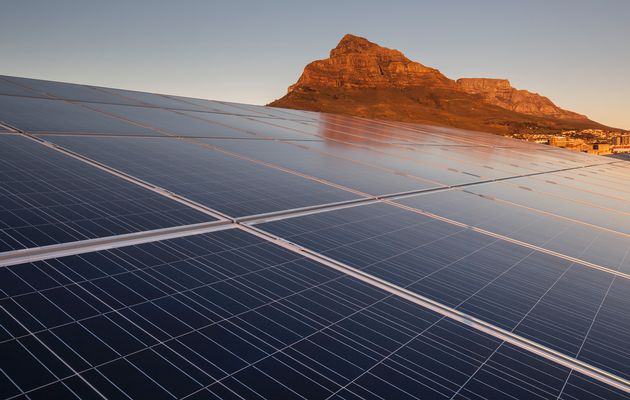The 1.2MW Black River Park (BRP) Solar Project has broken new ground in becoming the largest integrated PV (photovoltaic) plant in Africa and the first to legally transmit electricity back into the City of Cape Town’s electrical distribution network.
The 74 000 metre squared office park in Observatory, home to in excess of a hundred various companies, is leading the way in sustainable commercial real estate as the solar system forms part of a multi-faceted approach to reducing its carbon footprint and becoming more self-reliant and efficient.
“BRP is aiming to become the first-choice office park for tenants who are striving to operate businesses that are environmentally aware. The solar installation contributes very significantly towards the many other greening initiatives we have on site, to identify but a few, a car-pooling network, reverse osmosis plant for landscaping irrigation, on-site sorting for recycling,” said Joubert Rabie, developer and co-shareholder in BRP.
Green Building Council South Africa’s (GBCSA) tenancy puts into action the green lease, which is a win-win agreement, said Rabie. It is a shared undertaking between the landlord and tenant to ensure the effective running of the building along environmentally-friendly principles, such as high quality energy efficiency. The BRP also registered the whole of the north park for the existing building performance rating.
Jarrod Lewin, GBCSA business development manager said the BRP was the right choice for a number of reasons, “such as the building being a repurposed old warehouse, meeting our preference for recycled buildings, the mix of amenities in the park reducing staff car journeys, it’s close to public transport nodes, major road networks, the airport and the city centre”.
Green building inspires innovation, said Rabie. “Building resource-efficient structures that are environmentally-sustainable and cost-effective challenges project teams and developers to push the boundaries, in the process setting new benchmarks for their peers and taking the green building movement to new levels – BRP management and Sola Future have risen to that challenge.”
What is a PV (photovoltaic) plant?
Second phase
The second phase of the project, which comprises a further 500kW of solar power, was approved without any subsidies based on the performance of the initial 700kW, which has been operating above expectations since August 2013.
“The approval from the City of Cape Town marks a considerable breakthrough in the pursuit of electricity users who invest in independent power production to sell energy back to the distributors during periods where it is not needed on site,” said Sola MD Chris Haw, who is also spokesperson for the South African PV Industry Association.
“This is something that already occurs in most parts of the world and something we’ve been trying to implement in South Africa for years,” he said.
Buy-back
The buy-back rate has been proposed at 49.72c/kWh, about the same as that at which the city buys electricity from Eskom, but still lower than the rate at which the office park buys electricity from the municipality. This encourages most of the energy generated to be used on site, but caters for situations where the local demand is less than what is produced by the solar system.
“By international benchmarks, and also that of local solar IPPs, the buy-back tariff is low,” he said.
“The major obstacle preventing municipalities from encouraging more private generation and trade of electricity is the perceived threat to municipal revenues received from electricity sales. Sustainability experts, however, advise otherwise.”
Improved efficiencies
“What municipalities are beginning to realise is the small amount of lost revenue from allowing solar generation is more than compensated for by the increased economic activity as a result of improved efficiencies and higher attractiveness of the location to do business,” said Professor Mark Swilling, academic director of the Sustainability Institute in Stellenbosch.
The total project size of 1.2MW makes it one of the world’s largest roof mounted solar PV systems, and the largest in Africa, able to generate just under 2 million kWh per year from about 5 500 modules. The project has a guaranteed lifetime of 20 years and has minimal operational costs since the primary energy source, the sun, is free.
The system’s over performance is mainly due to higher than expected peak demand savings added to the energy savings. The peak demand for air-conditioning, especially in summer, coincides with hot, clear days when the PV system is operating at capacity.
Apart from the savings generated, the solar system also attracts tenants to the office park that are placing increasing importance on being able to report sustainable business practices to their shareholders.




